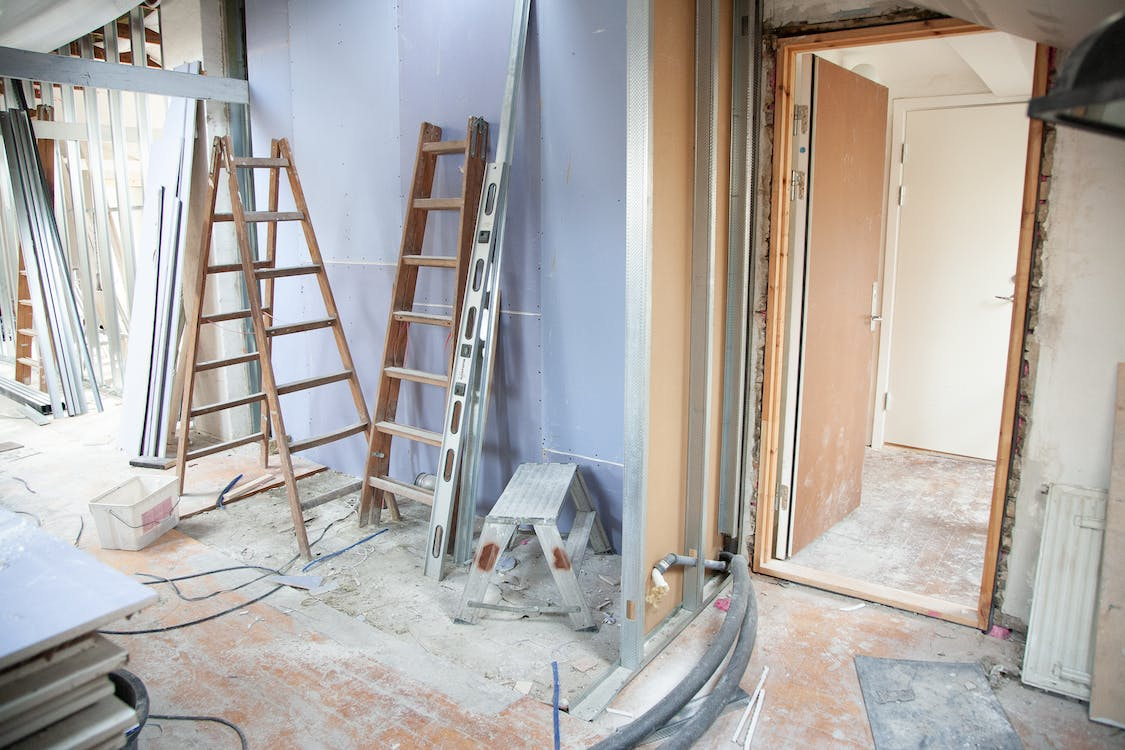Basics of Home Improvement Loans

What are Home Improvement Loans?
Any loan that’s dedicated to a home improvement project (or multiple projects) can be classified as a home improvement loan. It’s not a loan type per se, but it’s easily one of the most common reasons many homeowners take out a loan.
The loan can range from anywhere between a few thousand for small/specific improvements to a hundred thousand dollars (or more) for a complete remodel.
Types of Home Improvement Loans
Homeowners can take both secured and unsecured home improvement loans. The secured loans are anchored by the property itself, while the unsecured loans rely upon your credit score and income.
Personal Loans
Personal loans are unsecured loans you can take out for home improvement. Your rates would be influenced by factors like current market rates and your credit history. Personal loans may be more expensive compared to secured loans. The amount you can borrow will be restricted by your income and may be influenced by the scope of your home improvement project.
Credit Card
Using your credit card to fund home improvements may be the most expensive form of a home improvement loan, especially for large-scale projects that will have you incur significant credit card debt.
However, if you have financial discipline and you use your credit card to make small home improvements over a long period of time while paying minimal or no interest, it can be a cost-effective way to fund your home improvement.
It will not be a single home improvement loan but rather a series of small “loans” (credit card debt) that you pay off regularly before taking on a newer loan.
Three types of secured loans you can get for home improvement are:
Home Equity Loans
A home equity loan gives you a lump sum to fund your home improvement projects. Like your mortgage,your home will collateralize the loan, but the rate and terms might not be as good as the first mortgage. It will still be cheaper than a personal loan. How much you can borrow will be determined by the equity available in your home, your debt to income ratio and your credit score just like a first mortgage.
HELOC
The term HELOC stands for a Home Equity Line of Credit. With a HELOC, you qualify for a specific amount but you only take out what you need when you need it. You can even take money out, repay it and borrow it again if needed during the draw phase. It is the most flexible mortgage available and can be ideal for home improvement projects that start without a clear plan and definition of the project’s scope. The funds are available, and the borrower is only responsible for the amount actually borrowed.
Cash Out Refinancing
Cash-out refinancing is a way to take out additional equity from your home rather than adding a second mortgage. The cost of borrowing can often be rolled into the new mortgage. The interest rate for a first mortgage will be lower than for a second mortgage, the total cost to you will depend on the rate you are paying off and how much additional cash you borrow.
Factors to Consider In a Home Improvement Loan
A few factors you need to take into account when planning on taking out a home improvement loan are:
Scope of Home Improvement
If you do not have a clear idea of the renovation/remodeling you wish to perform, you may be unable to set an accurate financial baseline. So the first step is to determine what the home improvement will entail and why you are renovating/remodeling the home in the first place.
A couple examples could be a new porch or deck, remodeling your bathroom, or finishing your basement if your house has one. If you are renovating to sell your home at a better price, then it’s a good idea to only seek improvements that offer the best rate of return.
Home Improvement Cost
Once you have the scope of the home improvement down, you can ask different contractors for quotes. If you are going the Do It Yourself (DIY) route, you may have to do more research to come up with an accurate estimate, i.e., calculating the total cost of materials. You may take on some aspects of home improvement as DIY and outsource the rest to the contractors to control the home improvement costs and keep your debt requirement to a minimum.
Recouping Investment
When you are investing in a home improvement project, it’s important to evaluate why you are doing this project. If you plan on staying in the improved/renovated property for a long time, then the lifestyle improvements these renovations offer should be factored into these calculations.
Equity
Any home improvement loan you secure against your home will rely upon the equity you have built in the property so far. The more equity you have, the greater the scope of improvements you can accommodate.
Credit Score
Your credit score will also influence the rates you get, so ensure you have a healthy score before applying for a home improvement loan. If it’s not up to par, consider waiting instead of taking on costly new debt that may further impact your credit score negatively.
Lender
Not all lenders are the same when it comes to home equity loans. They may have different rates and restrictions. Some lenders might penalize early payments while others encourage it. Your goal should be to find the lender that offers you the best possible rates and least restrictive terms.





